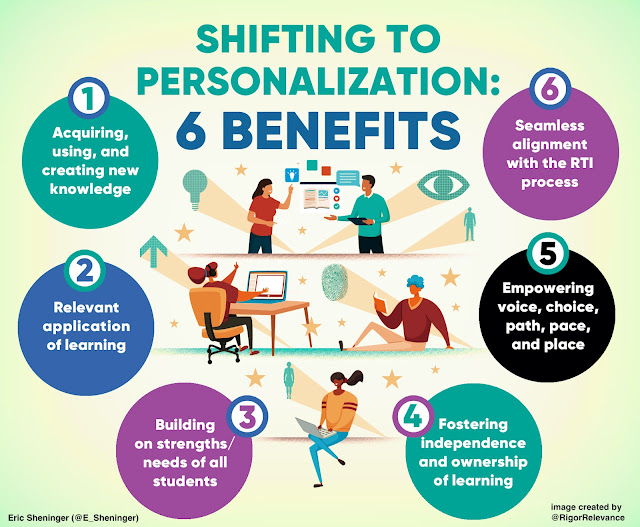Humans, by nature, are heavily influenced by experience. As such, we often do things a certain way because that is either all we know or what we are comfortable doing. Think about this for a second when it comes to behavior in education. We often teach the way we were taught and lead in a way that we were led. I’d wager that many of you reading this post are bobbing your head in agreement, although there are always exceptions. Change is hard, especially if we have been influenced in a certain way. Trying something new or different can instill a sense of fear or an uncomfortable feeling, which in turn keeps us firmly entrenched in our ways. While this is certainly natural, it can possibly inhibit growth.
Just because we were taught a certain way or told how to lead a learning culture effectively doesn’t mean we shy away from challenging conventional norms. As I have stated repeatedly over the years, TTWWADI (that’s the way we’ve always done it) is one of the most dangerous phrases in education. Changing behavior begins with shifting our focus with less emphasis on instruction and more on learning. While the former still has value, the latter leads to improved outcomes and success. Remember, instruction is what the teacher does, and learning is what the student not only does but shows. Hence, there is a need to prioritize the “who” instead of the “what.”
A great way to conceptualize this is through the lens of personalization. An impersonal approach is all students doing the same thing the same way at the same time. While this can have merit in moderation, excessive use of one-size-fits-all approaches is inequitable. They also tend to focus on the “what .”On the other hand, personalization is where all learners get what they need when and where they need it through equitable experiences. There is also clarity in terms of why they are learning what they are and how it will be used outside of school.
As I detailed in Disruptive Thinking in Our Classrooms, personalized learning represents a movement from the “what” to the “who” as a means to facilitate student ownership of the learning process. The image above represents a significant shift in terms of how we think about the purpose of education. Traditionally it revolved around “what” is taught, in the curriculum, on the test, or needed for promotion or graduation.
This shift results in not only a refined focus but also some significant benefits, such as:
- Acquiring, using, and creating new knowledge
- Relevant application of learning to solve real-world problems
- Building on the diverse strengths and needs of all students
- Fostering independence and self-regulation, resulting in greater ownership of learning
- Different ways to facilitate learning through high-agency strategies such as voice, choice, path, pace, and place.
- Seamless alignment with the RTI/MTSS process
A shift to a more personalized approach can fuel better outcomes and results while future-proofing learning in the process. While technology can be leveraged, it is not the end-all or be-all. Always remember that you can personalize without digital tools. Pedagogy trumps technology. In the end, the priority is, and always will be, providing an equitable learning experience for all students.


This is 100% fire. This MUST be a foundation for teaching and learning that is ACTUAL taught to teachers of all kinds. We must move away from students moving through a system to the system moving to the students!
ReplyDeleteThis is very useful insight to be used in education to manifest the 21st century skills learning
ReplyDeleteRelevancy #2 is important for brain memory or the main idea (big picture) while stating the facts of who, what, and where for setting is essential for reading and writing (#1). In terms of character actions (plot) of development to their emotional journey of understanding authors purpose (inform, persuade or entertain).
ReplyDelete